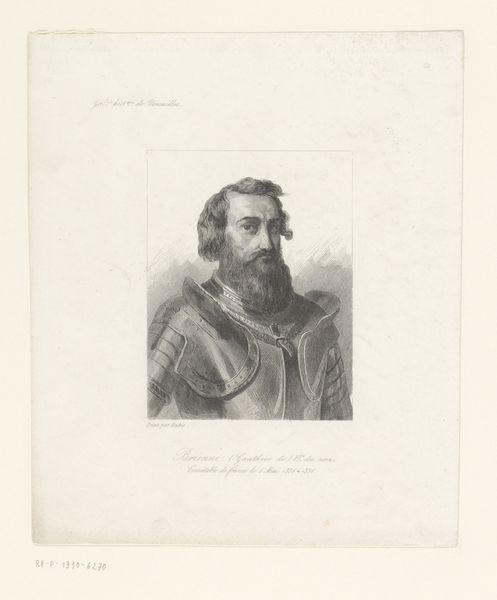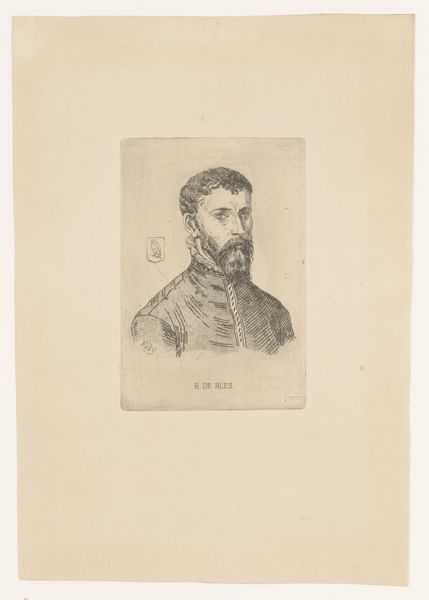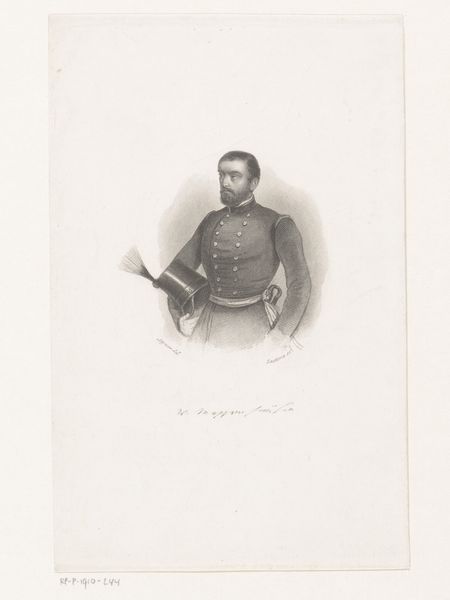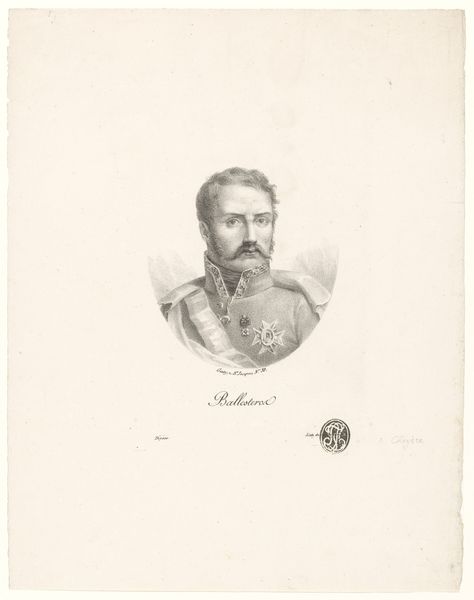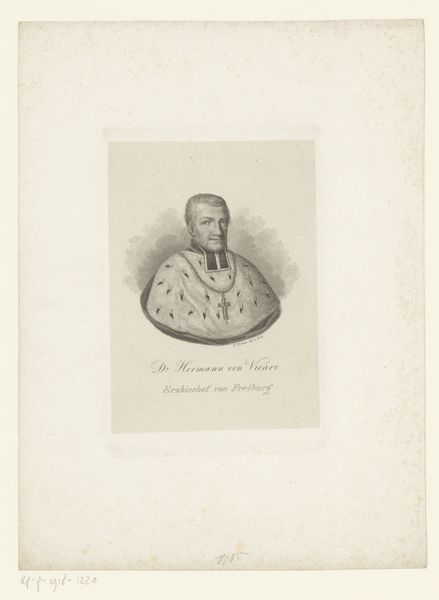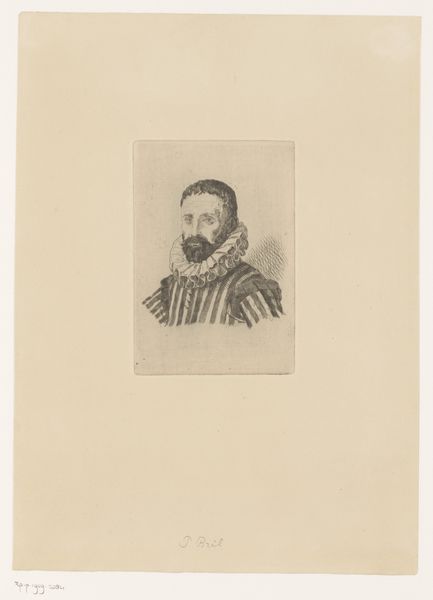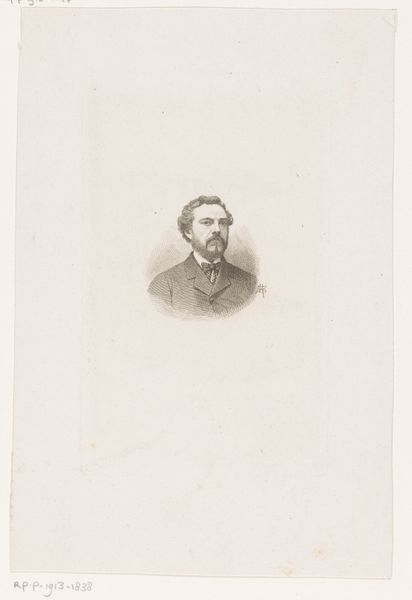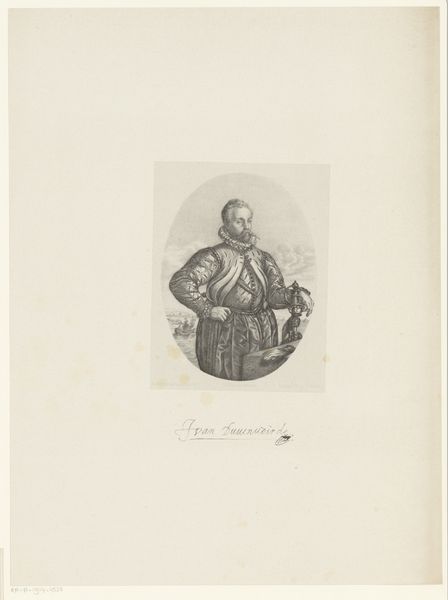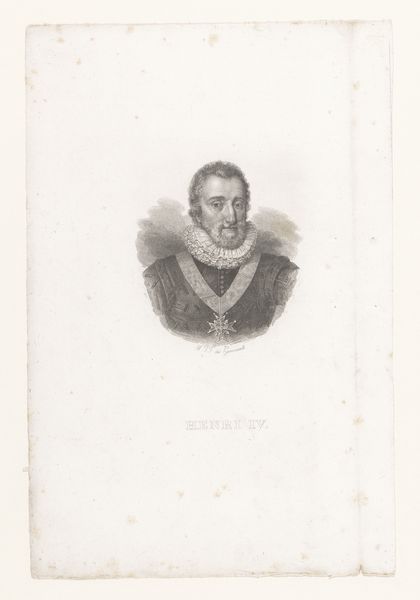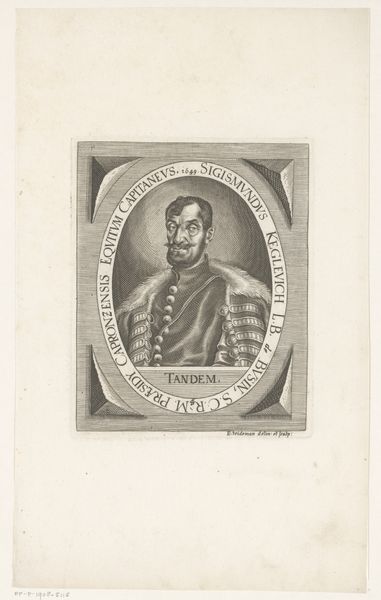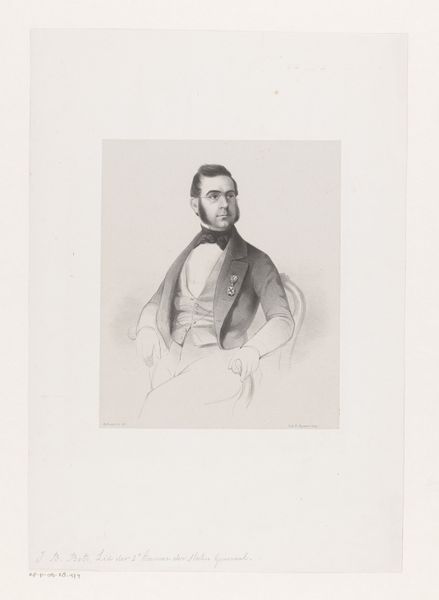
engraving
#
portrait
#
old engraving style
#
personal sketchbook
#
line
#
history-painting
#
engraving
#
realism
Dimensions: height 244 mm, width 163 mm
Copyright: Rijks Museum: Open Domain
Curator: Here in Gallery 23 at the Rijksmuseum, we have a captivating engraving titled "Buste van man in harnas," or "Bust of a Man in Armor," made by Gerhardus Fredericus Eilbracht sometime between 1844 and 1854. Editor: It has an imposing presence, doesn't it? The intricate details of the armor against the soft etching technique make him look ready for battle yet somehow…vulnerable. Curator: The interesting thing is, who was this man in armor? Eilbracht, about whom biographical information remains scant, captured him with exacting realism but lacked specific historical context. I see him as a product of an era increasingly preoccupied with the past. Editor: I agree. Consider the time, mid-19th century. It's right in the heart of growing nationalisms across Europe. The visual language here harkens back to images of great leaders and national heroes—masculinity and might became potent symbols of the social order. I would venture to guess this artwork plays on ideas about strength. But where did Eilbracht position himself in that narrative? Was he propping up dominant structures or looking askance? Curator: That's a fascinating point, how it speaks to dominant structures. Although his biography is a little opaque, there is space here to think about how even supposedly neutral portraiture choices serve implicit and sometimes unintentional agendas. Editor: Absolutely. Also, the contrast in the depiction between his face and body armour are so different. He looks lived-in, weary. The details on his neck ruff make it almost lace-like, not hard, but soft to protect a delicate part of his body. What an intimate insight into maleness. It also complicates assumptions about gendered aggression and vulnerability that endure to the present day. Curator: What's truly intriguing is how a seemingly straightforward historical portrait opens avenues for contemporary interpretation, revealing power dynamics within artistic representations across eras. It’s not merely an old engraving but a portal into evolving cultural norms around national pride and gendered expectations. Editor: Yes, by unveiling those embedded meanings, art history helps illuminate both our present and the narratives that are often left untold. Curator: Indeed. Next time you see armor in a museum, think twice, look beyond the shine!
Comments
No comments
Be the first to comment and join the conversation on the ultimate creative platform.

